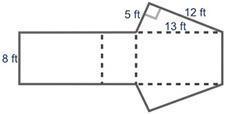
Mathematics, 08.02.2021 20:30, cache77
I BET NO ONE CAN GET THIS QUESTION RIGHT! WHOEVER CAN EXPLAIN IT AND GET IT RIGHT WILL GET BRAINLIEST.
C=
5
9
(F−32)
The equation above shows how temperature F, measured in degrees Fahrenheit, relates to a temperature C, measured in degrees Celsius. Based on the equation, which of the following must be true?
A temperature increase of 1 degree Fahrenheit is equivalent to a temperature increase of
5
9
degree Celsius.
A temperature increase of 1 degree Celsius is equivalent to a temperature increase of 1.8 degrees Fahrenheit.
A temperature increase of
5
9
degree Fahrenheit is equivalent to a temperature increase of 1 degree Celsius.
A) I only
B) II only
C) III only
D) I and II only

Answers: 1
Other questions on the subject: Mathematics

Mathematics, 21.06.2019 18:00, cashhd1212
The given dot plot represents the average daily temperatures, in degrees fahrenheit, recorded in a town during the first 15 days of september. if the dot plot is converted to a box plot, the first quartile would be drawn at __ , and the third quartile would be drawn at __ link to graph: .
Answers: 1

Mathematics, 22.06.2019 02:00, gcristhian8863
Light travels at 186,000 miles per second. light takes about 1 1? 3 seconds to travel from the earth to the moon. calculate the distance between the earth and the moon based on the speed of light.
Answers: 2

Mathematics, 22.06.2019 05:30, jasminelynn135owmyj1
How will you write 5 x 5 x 5 x 5 x 5 as an exponential expression? oa. 5x5 ob. 55 oc. 545 od. 5 reset next
Answers: 3

Mathematics, 22.06.2019 06:00, kaleighashtyn
Data on oxide thickness of semiconductors are as follows: 426 432 418 418 421 436 418 408 431 435 423 426 411 434 435 432 411 426 407 439 422 426 412 416 consider this data as a sample of the population. (a) calculate a point estimate of the mean oxide thickness for all wafers in the population. (round your answer to 3 decimal places.) (b) calculate a point estimate of the standard deviation of oxide thickness for all wafers in the population. (round your answer to 2 decimal places.) (c) calculate the standard error of the point estimate from part (a). (round your answer to 2 decimal places.) (d) calculate a point estimate of the median oxide thickness for all wafers in the population. (express your answer to 1 decimal places.) (e) calculate a point estimate of the proportion of wafers in the population that have oxide thickness greater than 430 angstrom. (round your answer to 4 decimal places.)
Answers: 3
Do you know the correct answer?
I BET NO ONE CAN GET THIS QUESTION RIGHT! WHOEVER CAN EXPLAIN IT AND GET IT RIGHT WILL GET BRAINLIES...
Questions in other subjects:


Business, 01.03.2021 19:00



Chemistry, 01.03.2021 19:00

Mathematics, 01.03.2021 19:00


Mathematics, 01.03.2021 19:00

History, 01.03.2021 19:00








